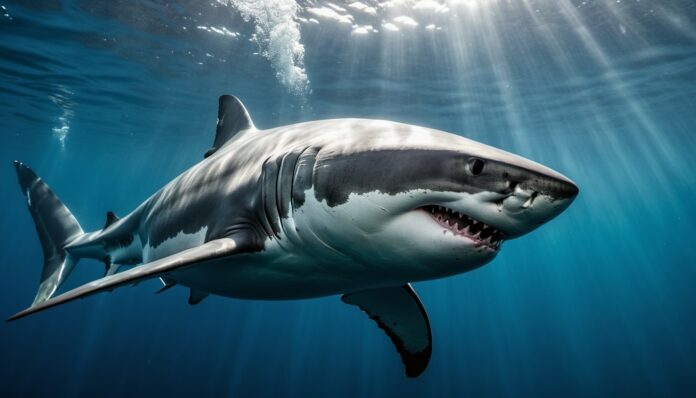Great white sharks are one of the most formidable predators in the ocean, known for their size, power, and unique behaviors. Here are some fascinating facts about these incredible creatures.
Interesting Facts About Great White Sharks:
- When chasing prey, a great white shark can thrust its body forward and leap out of the water. Its attack strategy involves quick, unexpected movements.
- While individuals over five meters long are extremely rare, the record length for an adult great white shark exceeds six meters. These sharks can weigh around 1.5 tons and continue growing throughout their lives, which span 60-70 years, comparable to human lifespans.
- Studies have shown that great white sharks not only regularly move along coastlines but also return to previous locations when swimming across the ocean. Both males and females migrate.
- The body of a great white shark is well-suited for swimming. Its torpedo-like shape and powerful tail fin allow it to move at speeds of up to 24 kilometers per hour.
- To detect prey, a great white shark has a special organ called the ampullae of Lorenzini located on its snout, which can detect electrical currents as low as 0.005 mV generated by all creatures in the water.
- Great white sharks are widely distributed in the ocean, primarily inhabiting temperate waters in the pelagic zone. They can reach depths of over 775 feet.
- When shown an unfamiliar object, a great white shark may “attack” it to determine if it is a potential food source, usually with a sudden strike from below.
- In one Chinese restaurant, several tourists were poisoned by deadly shark meat.
- Anti-shark cages cannot guarantee 100% safety for humans. Each year, there are incidents of sharks attacking tourists in cages, sometimes resulting in fatalities.
- Another interesting fact about great white sharks is their gestation period, which lasts eleven months. In the first month, the developing shark pup grows a powerful jaw.
- Their extremely acute and sensitive sense of smell allows great white sharks to detect small amounts of blood in the water from up to 5 kilometers away.
- The back of a great white shark is not white but gray or lead-gray, and the belly is not completely white, while the dorsal fins are black. Young great white sharks feed on small fish, dolphins, and turtles.
- Great white sharks grow to about 3 meters in length and then shift their focus to larger fish and marine mammals.
- Although great white sharks are considered apex predators (having no natural enemies of their own kind), they are occasionally (though rarely) hunted by larger orcas.
- The maximum number of offspring a great white shark can produce is 12.
- These predators sometimes attack boats and sailing ships because, from below, these vessels resemble the bodies of seals.
- An albino great white shark is a rare natural phenomenon. Professional divers in Africa were lucky enough to see such a unique predator. The sight of a snow-white body and white teeth is stunning, though not for the shark itself.
